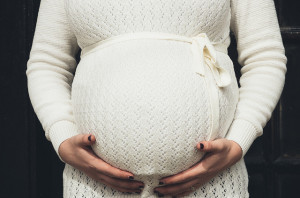As a woman and a politico, I always keep legislative news related to abortion and pregnancy on my radar screen. In recent years, there has been plenty to track — unfortunately, not usually good news, and that’s likely to continue this session.
New data shows pregnancy rates and abortion rates are actually dropping in our state. But with most statistics in North Carolina, these rates show a lack of parity among populations.
In short: women of color are still having more pregnancies and more abortions than white women. Their need for services such as Medicaid and safe and accessible reproductive services continues, even as some members of the General Assembly seek to shut those down.
Last session there were heated battles between lawmakers as Republicans sought to >>to regulate abortion clinics. Many women, doctors and legislators believed that this was a thinly veiled attempt to make women’s health services available to as few women as possible. This session, no such bill has been introduced yet, but >>Republican legislative leaders have said they plan to file additional legislation to regulate abortion.
The drop in the number of pregnancies and abortions statewide mirrors a national trend. >>According to the Center for Disease Control, pregnancy rates for women in the United States continued to decline in 2009, the latest year for which national data is available, reaching the lowest level in 12 years. The national pregnancy rate in 2009 of 102.1 is 12% below the 1990 peak.
Data from the >>N.C. State Center for Health Statistics show that by 2013, the number of pregnancies statewide had dropped by 9% from its recent peak of 130,886 in 2007. The pregnancy rate — the number of pregnancies per 1,000 women of reproductive age (15 to 44) — decreased almost 2% from 2012 to 2013.
The pregnancy rates, which factor in population differences, show that minority women are still more likely to get pregnant and have babies. The pregnancy rate for white women was 61.8 in 2013, compared to 79.0 for black women and 98.6 for Hispanic women.
Following a similar trend, the number of abortions in North Carolina decreased 5.5% from 2012 to 2013 and was down nearly a third since 2006. The abortion rate for white women in 2013 was 6.1, compared to 18.6 for Black women and 10.3 for Hispanic women. In fact, 45% of abortions were performed on Black women in 2013.
>>Studies have shown that economics may play a large role in the drop in the pregnancy rate, with fewer families being able to afford a child, driving more effective use of contraceptives. As women’s roles in the both the national economy and family budgets continue to grow, pregnancy and birth rates may continue to decrease.
Access to birth control and education about birth control and family planning also play a role in dropping pregnancy and abortion rates. These factors are likely the driving force in the >>dramatic decreases in teen pregnancy, birth and abortion rates across the country.
In order to provide all North Carolina women access to the lives they want and the healthcare they need, we must ensure that every woman gets education, care, and services throughout her reproductive life. This isn’t about politics. It’s about offering a basic quality of life to women.
>> Sara Lang has worked in North Carolina politics at the state, federal, and local levels for more than 15 years. A communications consultant, she lives in Cary with her husband, two young children, and a pampered dog.
Sara Lang has worked in North Carolina politics at the state, federal, and local levels for more than 15 years. A communications consultant, she lives in Cary with her husband, two young children, and a pampered dog.

There are no comments
Add yours